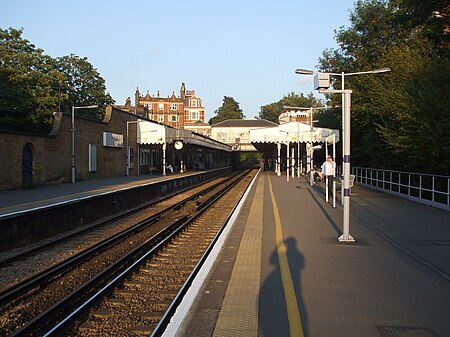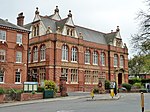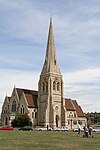Blackheath railway station
1849 establishments in EnglandBlackheath, LondonDfT Category C2 stationsFormer South Eastern Railway (UK) stationsGrade II listed buildings in the London Borough of Lewisham ... and 7 more
London stations without latest usage statistics 1415London stations without latest usage statistics 1516Rail transport stations in London fare zone 3Railway stations in Great Britain opened in 1849Railway stations in the London Borough of LewishamRailway stations served by SoutheasternUse British English from August 2012

Blackheath railway station is Grade II-listed and is in the south-centre of Blackheath, a village in southeast London. In traditional terms the area immediately south-west of the station around Lee Terrace and Lee Park is part of Lee; a status challenged by the station's naming, buildings such as the Blackheath Halls and the development of Blackheath Park to the south east. It is 8 miles 52 chains (13.9 km) measured from London Victoria. The tracks run through the village and are crossed by a road overbridge on which the station buildings stand.
Excerpt from the Wikipedia article Blackheath railway station (License: CC BY-SA 3.0, Authors, Images).Blackheath railway station
Tranquil Vale, London Blackheath (London Borough of Lewisham)
Geographical coordinates (GPS) Address External links Nearby Places Show on map
Geographical coordinates (GPS)
| Latitude | Longitude |
|---|---|
| N 51.4658 ° | E 0.0089 ° |
Address
Blackheath
Tranquil Vale
SE3 0AX London, Blackheath (London Borough of Lewisham)
England, United Kingdom
Open on Google Maps








